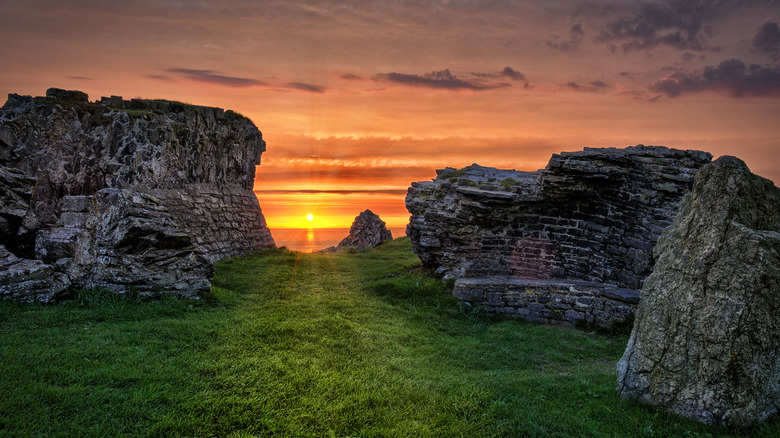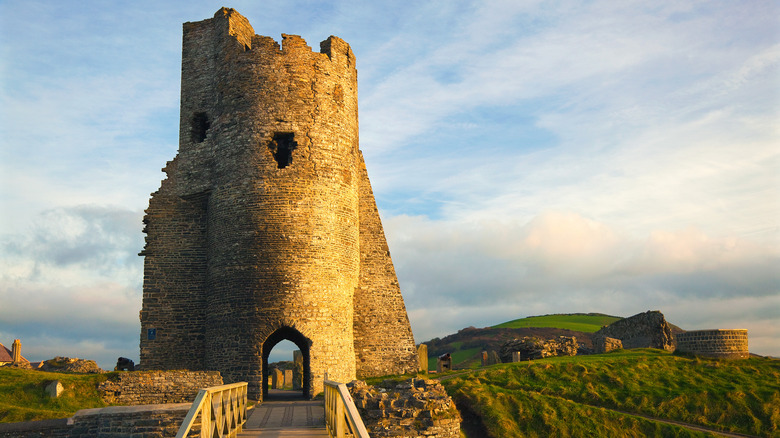The Mysterious Skeleton Discovered In Wales' Aberystwyth Castle
Wales' Aberystwyth Castle was built between 1277 and 1289, amid the First Welsh War. As reported by Geni, Aberystwyth Castle was commissioned by King Edward I and was meant to serve as a fortress in King Edward's so-called "iron ring" — which surrounded the town of Aberystwyth.
As reported by Geni, King Charles I designated Aberystwyth Castle as a Royal mint from 1637 to 1642. The mint produced eight different denominations of coins from locally-mined silver.
Throughout the centuries, the town and castle were severely damaged in a number of sieges, and the castle was ordered to be demolished by Oliver Cromwell in 1649. However, it was never completely destroyed. Geni reports the ruins of the original castle are still intact and are the only remaining structures from the former fortress and town.
In 1923, a war memorial was built next to the ruins. As reported by the War Memorials Register, the Aberystwyth Allegory was built by Signor Mario Rutteli and commemorates 183 men who lost their lives in World War I and World War II.
In 1988, excavators were stunned to discover a completely intact male skeleton amid the ruins. The identity of the skeleton was a mystery, and scientists had difficulty determining how the skeleton, which was likely several centuries old, was so well preserved.
The Aberystwyth Castle skeleton
As reported by Place and See, the acidic soil in Wales is generally destructive to organic matter, including bone. However, the skeleton discovered at Aberystwyth Castle did not have the expected degree of degradation, despite the fact that it had been there for an estimated 340 years.
Scientists believe limestone, which was used in the construction of the original structures, likely mixed with the soil and contributed to the preservation of the bones. They also determined the skeleton belonged to a male, who likely died in the Parliamentarian siege during the English Civil War — which lasted from 1642 to 1651.
As reported by Place and See, the man was deliberately buried at the site. Although his identity remains unknown, he was given the name "Charlie," and he is currently housed at the Amgueddfa Ceredigion Museum.
"Charlie" is also featured in the nine Aberystwyth Castle Mosaics, which were designed by Stuart Evans and made by local artist Pod Clare. The mosaics were created to celebrate the history of Aberystwyth Castle
BBC reports the mosaics are displayed on the castle walls, and provide visitors with a visual depiction of the key events in local history.

